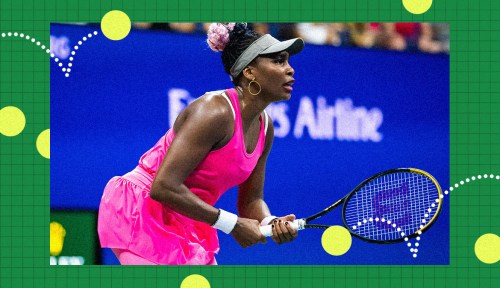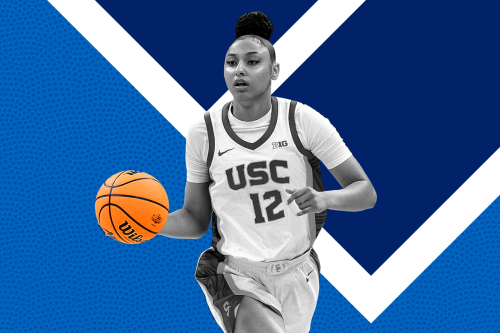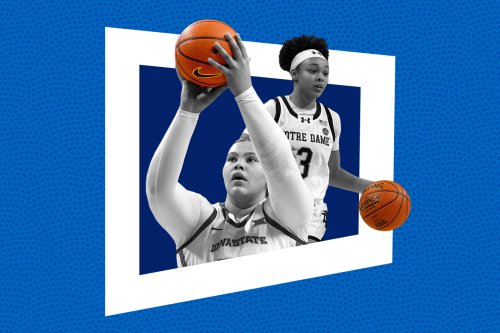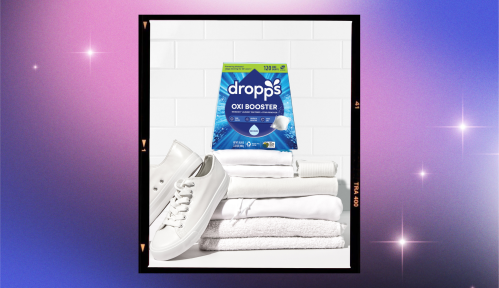Every year, the U.S. Open Tennis Championships sparks a frenzy that goes beyond its sport. We tune into matches, watch the stands closely, and get inspired to sign up for tennis lessons—even if we’ve never swung a racket before. And it’s not just us.
Experts in This Article
professor of marketing and consumer behaviors at Pepperdine Graziadio Business School
founder and editor of Merch Mates, a lifestyle and pop culture blog
a historian and assistant professor at the University of Nevada, Las Vegas
a sports writer, professional golfer, and former competitive tennis player
The U.S. Open’s popularity was never more apparent than last year, when Coco Gauff’s win—the first by a teenager to in more than two decades—attracted nearly 3.4 million viewers, making it the the most-viewed women’s final of any tennis major broadcasted on ESPN. That match pushed viewership on the network up 92 percent from the previous year’s championship.
It’s undeniable that this Grand Slam piques the interest of the masses each summer, but it’s worth asking: Why the fascination over a tournament for a sport that (let’s be honest) many people don’t pay attention to the rest of the year?
It’d be difficult to recognize the U.S. Open at its inception in 1881, when it was a men’s singles and doubles tournament in Newport, Rhode Island, per the ATP Tour.
“The carnival-like ambience of the U.S. Open today draws in not only avid tennis fans, but also those who may not typically follow the sport,” says Kendra Gage, PhD, a historian and assistant professor at the University of Nevada, Las Vegas, who specializes in topics such as U.S. sports history. “Fans cheer, whistle, and enthusiastically applaud—particularly on the main court, Arthur Ashe Stadium, which has earned a reputation for being the ‘loudest’ stadium in the sport.”
While some players and ardent tennis fans chastise this lack of traditional tennis etiquette, others celebrate the shift for its ability to attract new fans. The relaxed atmosphere contrasts with the typical tennis decorum in other major tournaments, making the U.S. Open feel more accessible and entertaining to a larger audience, Dr. Gage adds.
But this sensation goes beyond cheering crowds. Here are three more key reasons the U.S. Open holds such mass appeal.
1. The celebrity aspect
Despite the excitement of the game itself, those who attend also create allure around the U.S. Open. It’s become a cultural event that attracts celebrities and, in turn, viewers who hope to see their favorite stars in the stands.
“The presence of celebrities at the matches has led to a significant increase in viewers who wouldn’t ordinarily watch tennis,” Dr. Gage says. “This is, in part, because the U.S. Open has become a highly sought-after ticket by celebrities who view their attendance as an important status symbol.”
Cameras at the event try to capture viral moments, like when Jimmy Fallon and Justin Timberlake danced to Beyoncé’s “Single Ladies” in 2015. Similarly, Meryl Streep’s dramatic reactions became a meme of their own during the 2018 games—and Kylie Jenner and Timothée Chalamet’s PDA made headlines in 2023.
“It doesn’t matter where the celebrities are or what they’re watching, their fans will be interested,” says Cristel Russell, PhD, professor of marketing and consumer behaviors at Pepperdine Graziadio Business School. “Star power helps direct fans’ attention.”
Knowing this appetite for celebrity juice, the media’s coverage of the event has expanded from the players to also include famous people in attendance, who they came with, and what they wore to the event.
“This has created a new fan base that is more invested in the entertainment side of the Open than the actual matches,” Dr. Gage says.
Although celebrities attending the U.S. open is not new, it’s gained momentum in recent years, says George Patient, founder and editor of Merch Mates, a lifestyle and pop culture blog.
This is in part due to the high-profile opportunity it offers celebrities to reinforce their status and visibility, but also because of its position as a networking hotspot.
“It’s a place where the entertainment, fashion, and business worlds intersect, creating opportunities for collaborations and endorsements,” Patient says.
Major names spotted at the 2023 U.S. Open include former president Barack Obama and former first lady Michelle Obama, Gayle King, Leonardo DiCaprio, Nicole Kidman, Mindy Kaling, Matthew McConaughey, Justin Timberlake, Lil Wayne, and Martha Stewart, per Town & Country.
“The U.S. Open offers opportunities for people to tune in and watch something live that they can discuss with their family and friends in person or on social media.”—Cristel Russell, PhD
2. The social media influence
Even when spectators aren’t in the stands themselves, social media gives them the chance to experience live events like the U.S. Open in real time—and that doesn’t mean just the matches.
“Live sports events generate buzz and togetherness,” Dr. Russell says. “The U.S. Open offers seldom-available opportunities for people to tune in and watch something live that they can discuss with their family and friends in person or on social media.”
The U.S. Open official TikTok account (which has 1.6 million followers) focuses not only on key moments during the matches, but also on the celebs present, creating a light-hearted, fun culture for the Open that’s not always associated with tennis.
“Social media has definitely played the most significant role in generating a newer fan base for the U.S. Open,” Dr. Gage says. “They recognize the power of social media influencers and opened an influencer suite in 2022.”
These influencers cover their experiences, the foods they eat, advertising brands, and celebrities they see. What’s happening on the court is often second-tier content.
The players themselves get in on the social media buzz, too. Gauff used her own account to create a TikTok video with the caption “this barbie is the us open champion 💞,” accompanied by the popular Nicki Minaj and Ice Spice song “Barbie World.”
“Several of the younger players, like Coco Gauff, Carlos Alcaraz, and Ben Shelton, have significant followings on their social media platforms and are inspiring the next generation to not only watch tennis but to play the sport as well,” Dr. Gage says.
Patrick Stephenson, a sports writer, pro golfer, and former competitive tennis player, says major events like the U.S. Open get readers interested in learning more about sports—especially when social media plays a significant role.
“Pictures from the tournament proliferate social media, normalizing tennis as a recreational or observational pastime, even for non-players,” Stephenson says.
Of course, all of this social media buzz plays into that oh-so-common fear of missing out, too.
“The glamorous portrayal of the U.S. Open on social media creates a sense of FOMO,” Patient says. “Seeing celebrities enjoying the event compels many to tune in, not wanting to miss out on what has become a major cultural happening.”
3. The effect on other social issues
The U.S. Open has a unique position in women’s sports because of the efforts of the Women’s Tennis Association. The association was founded in 1973 by Billie Jean King, who pushed for the U.S. Open to be the first sporting event in the world to offer equal prize money for both men and women, Dr. Gage says.
In 2001, the U.S. Open made history again by scheduling its first final match for prime-time network television, which led to the historic coverage of the match between sisters Venus and Serena Williams—a major stride for broadcast parity. And Gauff’s victory in 2023 attracted over a million more viewers than the men’s final match, generating even more excitement around women’s tennis and women’s sports in general.
That said, the U.S. Open’s impact goes beyond women’s sports. Many other celebrations, for social and cultural movements beyond tennis, take place at the tournament.
During last year’s Open, festivities for the LGBTQ+ community and Historically Black Colleges and Universities took place, the third time these events were celebrated at the U.S. Open, reports The New York Times.
“Many sports leagues have realized that the 21st century and its slew of social movements requires that they address diversity—or lack thereof,” Dr. Russell says.
It also attracts those wanting a highly visible platform to speak out about certain issues: In 2023, climate protestors caused a 45-minute delay during Gauff’s semifinal against Karolína Muchová. Protestors were escorted out of the stadium and the match continued.
“In an age of on-demand everything, people long for something to talk about that is unfolding in front of their eyes.”—Dr. Russell
The future of tennis in the U.S.
The U.S. Tennis Association has developed a growth strategy to increase the number of people playing tennis to 35 million in the United States by 2035, and they want to focus on reaching a more diverse group of players.
“Their initiative promotes equity and diversity within the tennis community and is focused on ensuring the long-term sustainability and growth of the sport by tapping into a wider talent pool,” Dr. Gage says.
The pandemic may have given this initiative a boost: Some research suggests the pandemic led to the growth of the sport, because it was one of the few sports that people could still participate in while social distancing, Dr. Gage adds.
Pickleball and badminton are also on the rise, making 2024 seemingly year of the racket. It’s expected that the U.S. Open will continue to bring in excitement, viewers, and social media posts when the tournament begins August 26.
“It will offer seldom-available opportunities for people to tune in and watch something live that they can discuss with their family and friends in person or on social media,” Dr. Russell says. “In an age of on-demand everything, live events are becoming rarer and rarer—and yet, people long for something to talk about that is unfolding in front of their eyes.”
Sign Up for Our Daily Newsletter
Get all the latest in wellness, trends, food, fitness, beauty, and more delivered right to your inbox.
Got it, you've been added to our email list.











